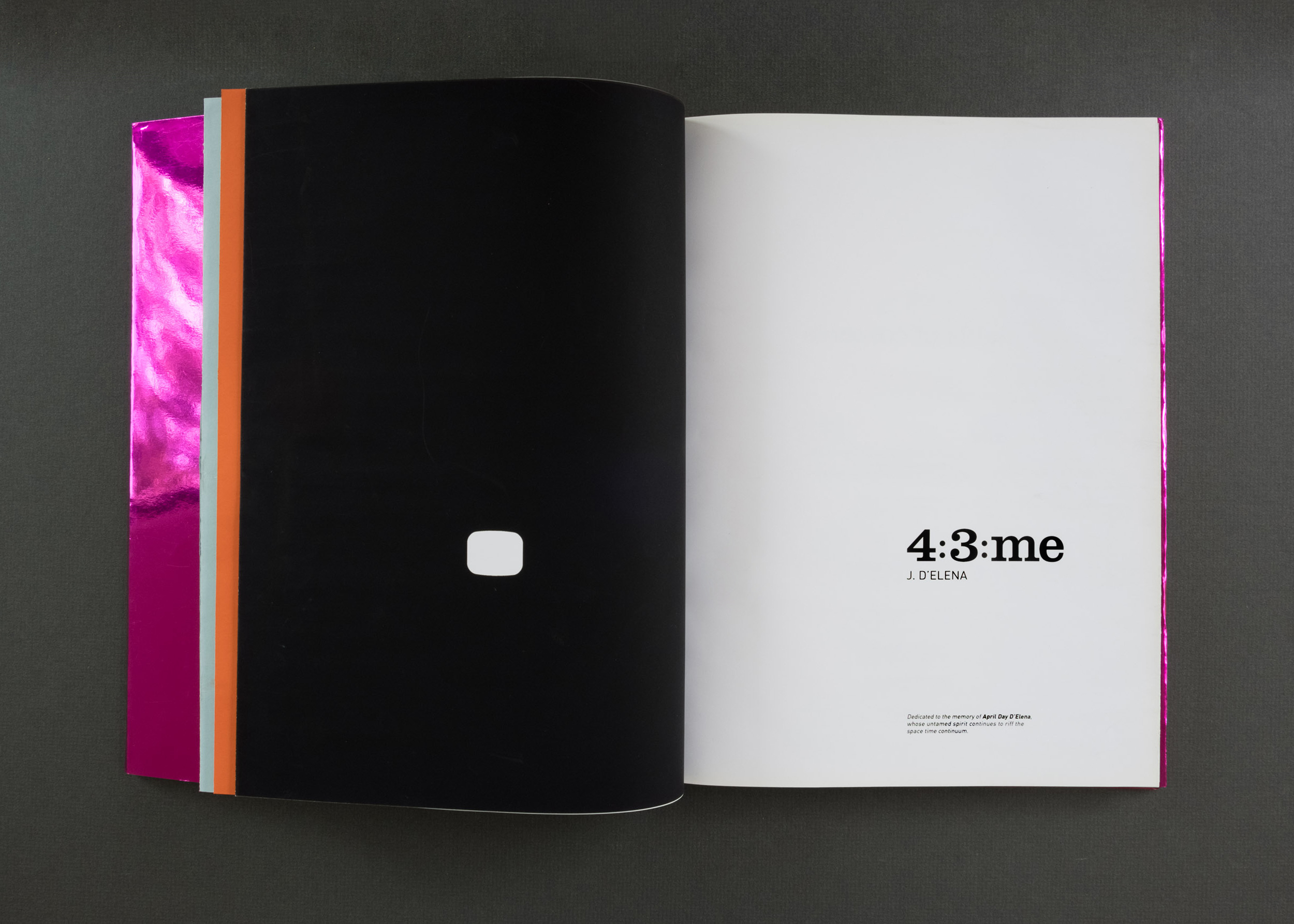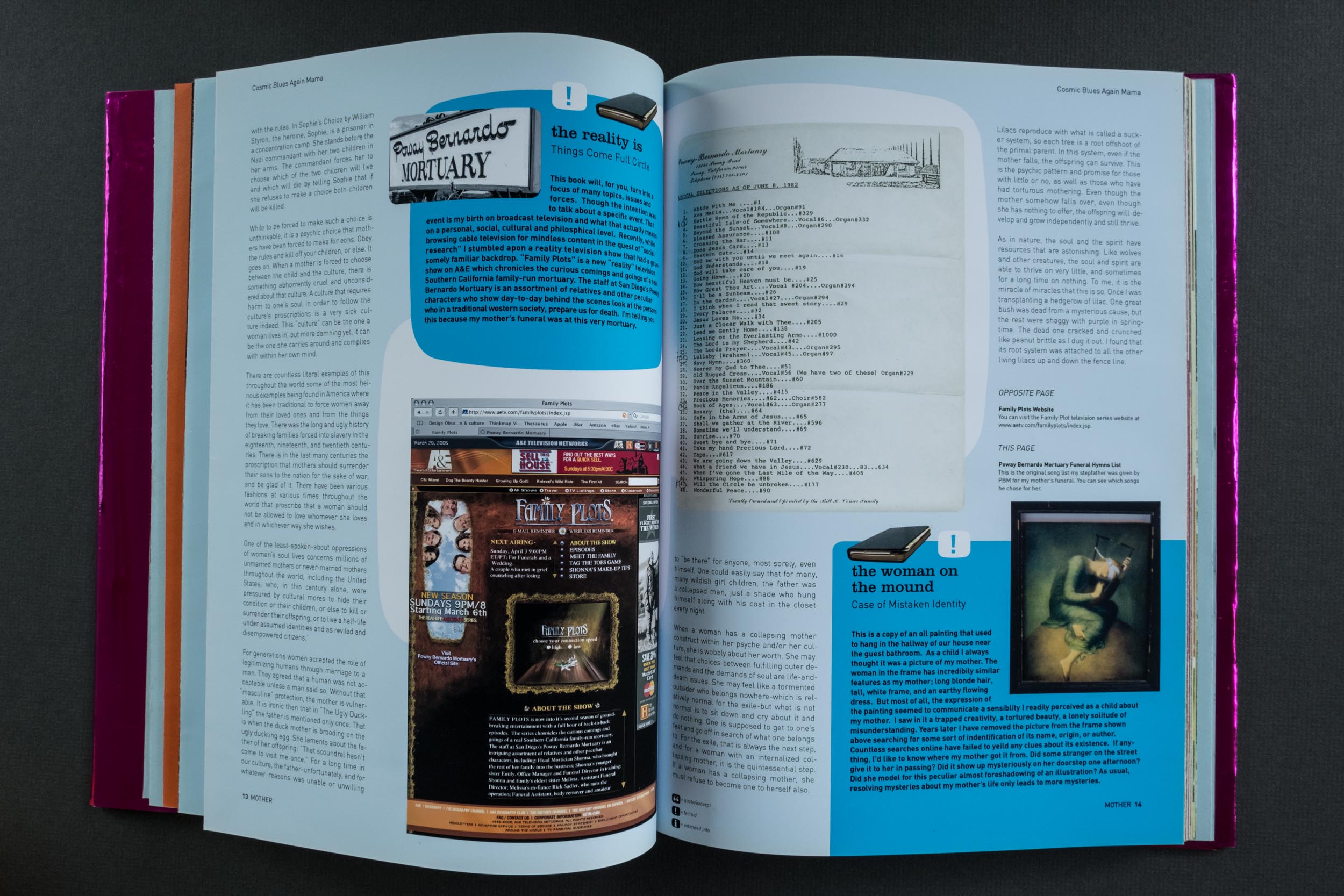
4:3:ME
Far from noteworthy in light of today's perpetually public and shared lives, the implications of a televised birth were theoretically thick four decades prior. 4:3:ME is an encyclopedia of one such event, expanding far and wide on both the contributing forces and subsequent reverberations of the 1976 network broadcast of the moment I was born.
Drawing on the social commentary of media theorists from Marshall McLuhan to Greil Marcus and Jean Baudrillard positioned adjacent to an archive of auto-biographical texts and artifacts, 4:3:ME draws metaphorical connections between the physical phenomenon of being born on television and growing up in the generation that was psychologically raised by the medium. The book's divisions, "MOTHER", "CAMERA", "ME", and "AUDIENCE" concentrically organize content from the event's intimate biographical affect outward toward a broader deconstruction of a mass-media driven society.




The book opens by introducing and describing the event itself. While my mother was giving birth to me, a production crew was onsite at the hospital filming a documentary about natural childbirth. At the opportunity to film a live natural childbirth, the crew was present in the room and recorded my birth. The doctor held me up, fresh from my mother, and declared to the camera that I was a naturally born child.

Each section is introduced by a monitor about whom the following story is titled. The monitor reiterates the television as an active point of contact for all the parts of the book, the connective tissue of the content.


Like a conventional encyclopedia, there are primary texts which profile the artifacts while a majority of the passages are selected works of critical theorists and writers whose disciplines bear cultural or intellectual relevance to the content. The pairing of personal/microbial artifacts with more macro theoretical texts offers a compelling dialog for both the author and reader.







As new macro ideas are introduced, the signal on the monitor begins to intensify, suggesting that more connections are being made, more information is being processed and a picture is coming into being.

CAMERA focuses on the biology of media devices, and the transformational consequences resulting from ones identity and representation being split by the camera’s duplication of them.


A look at how the book choreographs a relationship between personal artifacts and the more well understood theoretical works of familiar authors and artists — the image on the left is extracted from Marshall McLuhan’s The Medium is the Massage while the image on the right is a 1970s newspaper ad for a stereo dealer in San Diego, featuring me as an infant.


Shown is a timeline formatted to look like a TV Guide programming schedule. The fields are a cross-section of popular television moments with phrases extracted from several situationist texts.
While a TV Guide entry reads, “The nutty scene wasn’t a meaningful scene, lectures on how to put on socks and shoes and civil rights.”, the adjacent Situationist entry counters, “An appropriate prototype for the decor of the constructed situation.”


TV Guide magazine covers from 1976 for the most part reflecting banal highlights of sitcom culture. But recessed in the layout hierarchy are more intellectually-driven questions about politics and ideologies of television in general.
While the cover story begs, “What will become of Rhoda’s look this season?”, the secondary story states, “Why the feminist left attacks television as entertainment.”


This spread features a striking ad from Good Housekeeping, where the television itself is watching the consumer.





ME is a confessional chapter which reveals the influence the event has had on my psychology as an individual, artist and designer.


As an undergraduate art student, the subject matter of much of my work was about the relationship I had to the televised image.


AUDIENCE focuses on the new medias integrating into the mainstream social space, appearance, and spectacle.

It accounts for the inventory of spaces with which new media and projected images has capitalized on and consumed.


What were once considered spaces of intimacy, now have an invasive proximity to televised feeds, pictures and intangible experiences.
On this spread TW Adorno suggests, “The principle that what is experienced vicariously will have some effect on some people is an established one, and is the reason why industry finds it worth while to spend millions of pounds on advertising.”

